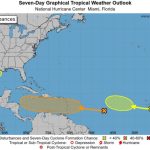Dominican Republic to post LatAm´s 2nd highest growth in 2016

Santiago, Chile.- LatinAmerican and Caribbean economies will contract -0.4% on average in 2015 andwill grow just 0.2% next year, affected by a complex external scenario,according to new projections unveiled today by ECLAC.
The United Nationsregional organization presented in Santiago, Chile, its annual reportPreliminary Overview of the Economies of Latin America and the Caribbean 2015,in which it updated the estimates given last October and called again on theregion’s countries to invigorate economic growth through greater investment andhigher productivity.
“It is necessary toresume growth and reverse the contractionary investment cycle in a context ofslow global recovery and a decline in trade,” Alicia Bárcena, ExecutiveSecretary of the Economic Commission for Latin America and the Caribbean(ECLAC), said during a press conference where the document was presented.
The senior UnitedNations official underscored that the agreements reached at the recentConference of the Parties (COP21) of the United Nations Framework Convention onClimate Change held in Paris will enable countries to provide incentives toinnovation and investment in new sources for the production of renewableenergy, which has huge potential in the region.
“In the currentcontext, active fiscal policies to promote smart adjustments gain greaterrelevance: analyzing the level of public spending as well as its composition toavoid excessive cuts to public investment and social spending; reviewing thestructure of fuel subsidies and tax incentives in order to strengtheninstruments for promoting investment and financing social spending; andreducing tax evasion/avoidance, which on average is equivalent to 6.3 points ofregional Gross Domestic Product (GDP), or $320 billion dollars,” Bárcena added.
According to ECLAC’sreport, the region will have to face diverse scenarios and risks related to theglobal economy in 2016, which will undoubtedly condition its economicperformance. On the external front, global growth is forecast to remain slowand reach 2.9%, while uncertainty persists regarding China—one of the region’smain trading partners—which will continue decelerating to 6.4%.
Compounding uncertaintyover the global economy is low growth in international trade (1.5% in 2015 and2.5% forecast for 2016). In addition, the prices of the commodities that theregion exports will stay low, meaning that Latin America and the Caribbean willonce again suffer a deterioration in its terms of trade in 2016, especially incountries that export hydrocarbons and minerals, the document states.
In financial terms,ECLAC explains that the volatility and uncertainty observed in 2015 willcontinue next year, which means that some emerging economies will still havedifficulty obtaining resources in international markets. On top of that, therewill be impacts from the steady appreciation of the dollar and the rise inUnited States interest rates.
As in previous years,external conditions have a highly differentiated effect in the region, whichwill show marked heterogeneity. While Central America will grow around 4.3% in2016, South America will see its GDP shrink -0.8%, mainly due to the expectedcontractions in Brazil (-2.0%) and Venezuela (-7.0%). Meanwhile, theEnglish-speaking Caribbean will grow 1.6%.
According to ECLAC’sprojections, Panama will lead regional growth next year with an expansion of6.2%, followed by Dominica and the Dominican Republic (5.2%), Saint Kitts andNevis (4.7%) and Bolivia (4.5%). It is expected that Nicaragua will grow 4.3%,Cuba 4.2%, Guatemala 4.0%, Peru 3.4%, Costa Rica and Honduras 3.3%, Colombia andParaguay 3.0%, Mexico 2.6%, Haiti 2.5%, El Salvador 2.4%, Chile 2.1%, Uruguay1.5%, Argentina 0.8% and Ecuador 0.3%.
Finally, in itsPreliminary Overview 2015 ECLAC emphasizes that it is essential to advancetowards fiscal rules that prioritize capital spending. It adds that designingefficient anti-cyclical schemes of investment protection is extremely importantto face the region’s macroeconomic volatility, as well as to reactivateaggregate demand and maintain social spending.
















